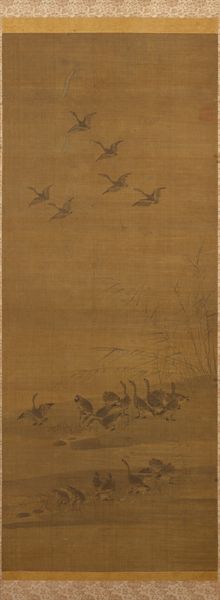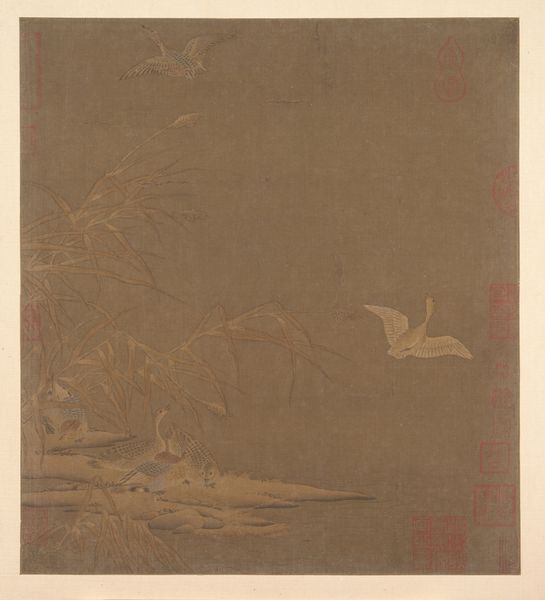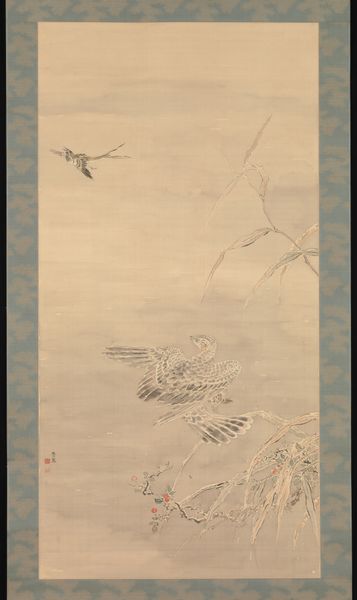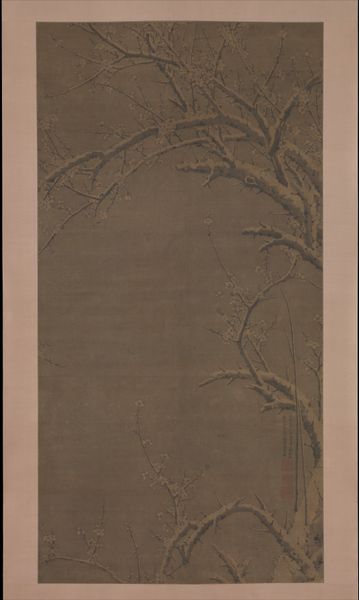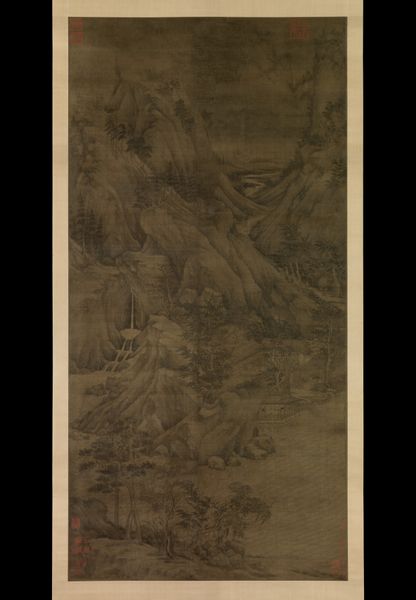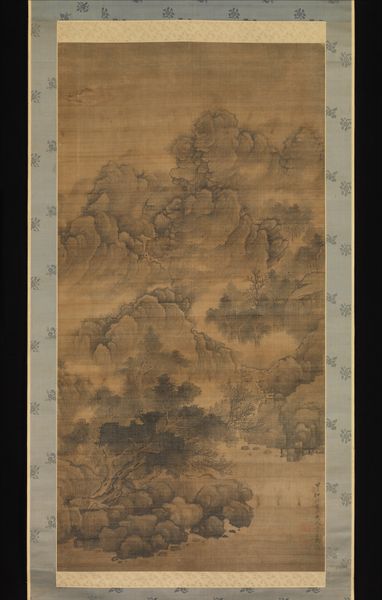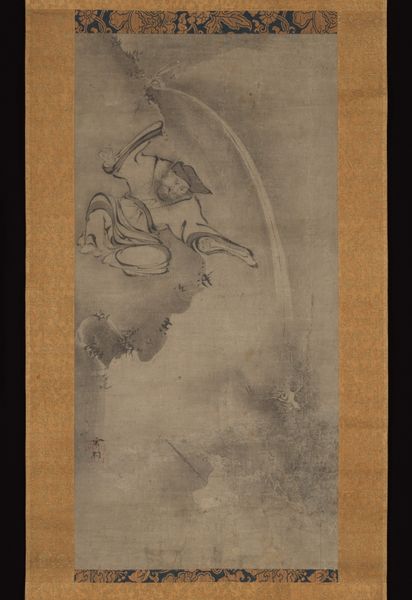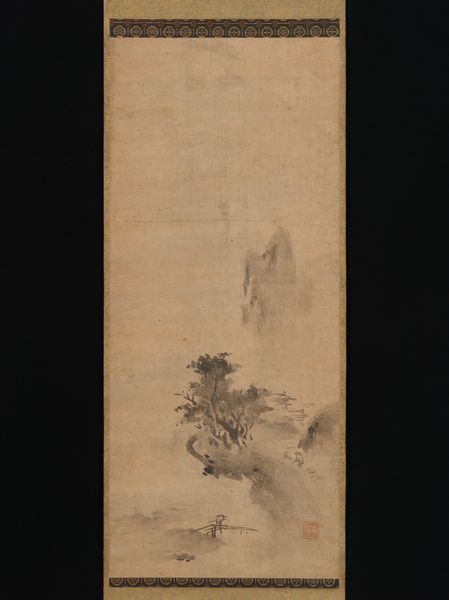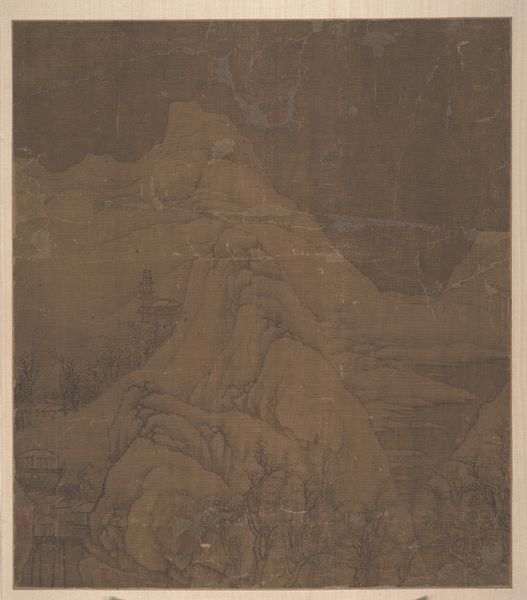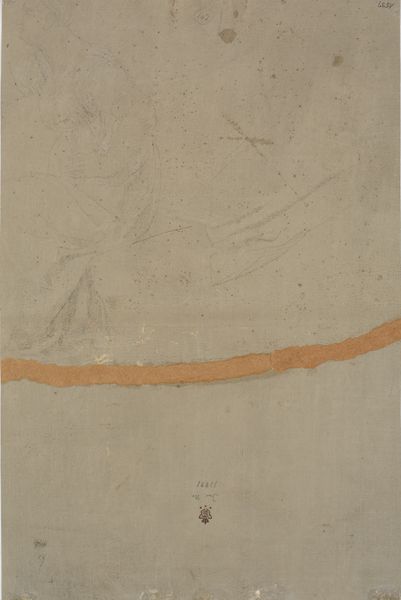
painting, ink
#
painting
#
asian-art
#
landscape
#
japan
#
figuration
#
ink
Dimensions: Image: 43 1/2 x 17 3/8 in. (110.5 x 44.1 cm) Overall: 71 3/4 x 20 1/4 in. (182.2 x 51.4 cm)
Copyright: Public Domain
Curator: This scroll, attributed to Tesshū Tokusai and created in 1343, is called "Reeds and Geese." It's an ink painting and a wonderful example of Japanese figuration and landscape art. Editor: Immediately, the somberness strikes me. The subdued palette, mostly browns and blacks, conveys a sense of stillness, perhaps even melancholy. The geese in flight almost seem to fade into the vastness. Curator: Absolutely. "Reeds and Geese" reflects an appreciation for subtlety. What’s key here is recognizing that the socio-political context influenced artistic expressions. The artist might have felt constrained and so chose a path of symbolic meaning through understatement. These types of compositions often mirrored a call for reflection, resonating deeply with the intellectual climate of the time. Editor: Do you think that's why they're also so diminutive within the composition? The birds seem like small marks within a much grander scene of water and reed. This seems characteristic of ink-painting traditions of that era and creates a specific sense of scale, emphasizing our relative insignificance in the natural order. Curator: That's a vital observation. There is commentary implicit within the seemingly passive imagery. We can interpret it in light of political or class dynamics, like a visual lament for individual or communal freedoms suppressed or diminished by dominant forces. This artist gives us coded reflections on power. Editor: Considering the materials, the softness of the ink wash compared with the firm brushstrokes defining the reeds adds a dynamic tension. Is that simply technique, or could it suggest contrasting forces in society? Curator: You raise a great point! Such stylistic choices are far from accidental. They engage in an ongoing visual dialogue, not only mirroring societal tensions, like hierarchy versus fluidity or freedom versus rigidity, but also questioning these constructions altogether. In other words, the work allows for active engagement, asking us to not just observe the artwork, but to analyze its relationship with power dynamics. Editor: So, viewing it less as a straightforward depiction of nature and more as an encoded statement about its era...fascinating. I feel that I see that somber mood now, as potentially rooted in the sociopolitical issues and perhaps the artist’s call for freedom. Curator: Precisely! Understanding its production opens new doors to understanding that historical milieu. It also underscores the importance of continuous engagement with art from marginalized viewpoints.
Comments
No comments
Be the first to comment and join the conversation on the ultimate creative platform.
